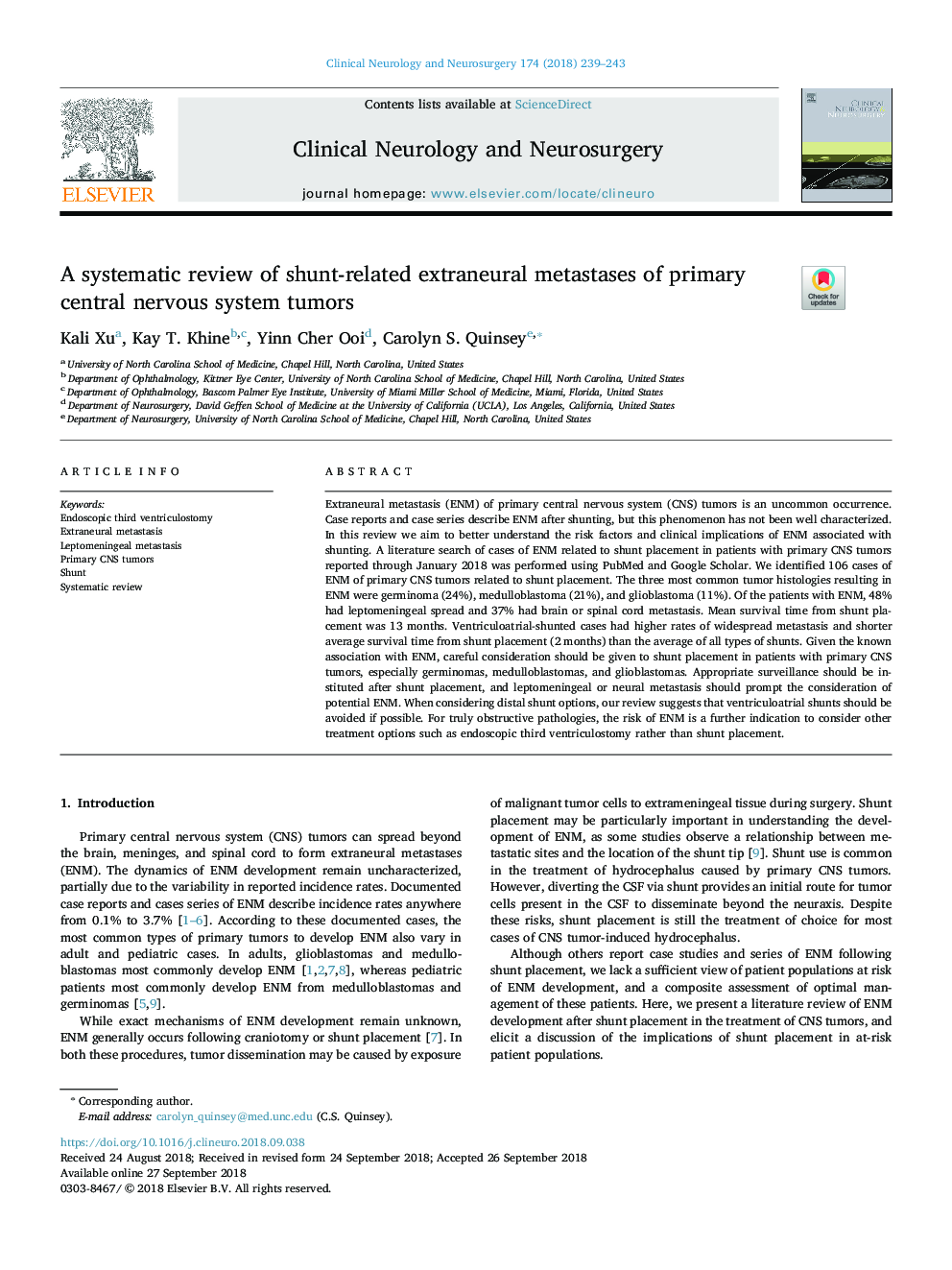| Article ID | Journal | Published Year | Pages | File Type |
|---|---|---|---|---|
| 11030621 | Clinical Neurology and Neurosurgery | 2018 | 5 Pages |
Abstract
Extraneural metastasis (ENM) of primary central nervous system (CNS) tumors is an uncommon occurrence. Case reports and case series describe ENM after shunting, but this phenomenon has not been well characterized. In this review we aim to better understand the risk factors and clinical implications of ENM associated with shunting. A literature search of cases of ENM related to shunt placement in patients with primary CNS tumors reported through January 2018 was performed using PubMed and Google Scholar. We identified 106 cases of ENM of primary CNS tumors related to shunt placement. The three most common tumor histologies resulting in ENM were germinoma (24%), medulloblastoma (21%), and glioblastoma (11%). Of the patients with ENM, 48% had leptomeningeal spread and 37% had brain or spinal cord metastasis. Mean survival time from shunt placement was 13 months. Ventriculoatrial-shunted cases had higher rates of widespread metastasis and shorter average survival time from shunt placement (2 months) than the average of all types of shunts. Given the known association with ENM, careful consideration should be given to shunt placement in patients with primary CNS tumors, especially germinomas, medulloblastomas, and glioblastomas. Appropriate surveillance should be instituted after shunt placement, and leptomeningeal or neural metastasis should prompt the consideration of potential ENM. When considering distal shunt options, our review suggests that ventriculoatrial shunts should be avoided if possible. For truly obstructive pathologies, the risk of ENM is a further indication to consider other treatment options such as endoscopic third ventriculostomy rather than shunt placement.
Related Topics
Life Sciences
Neuroscience
Neurology
Authors
Kali Xu, Kay T. Khine, Yinn Cher Ooi, Carolyn S. Quinsey,
